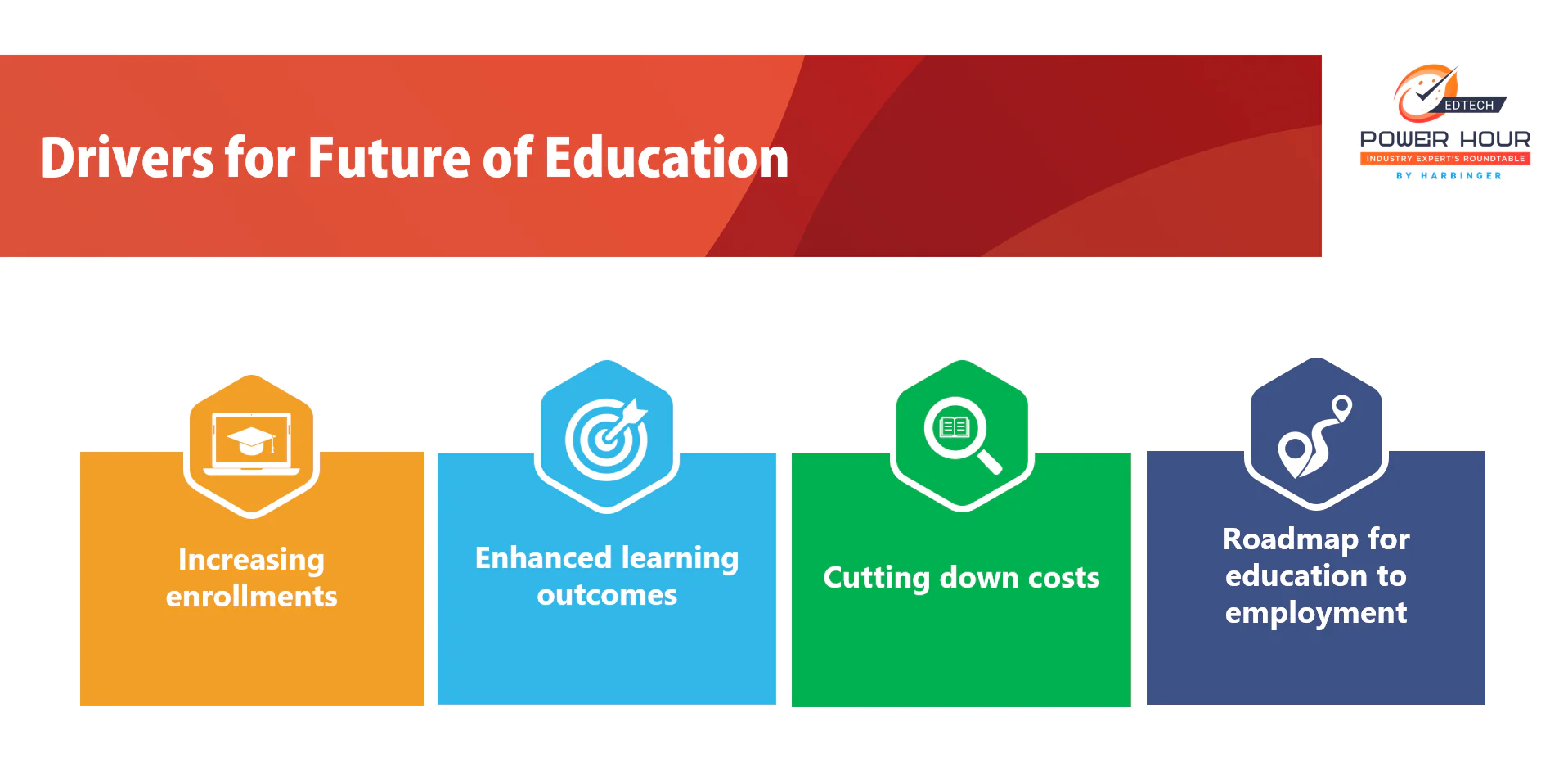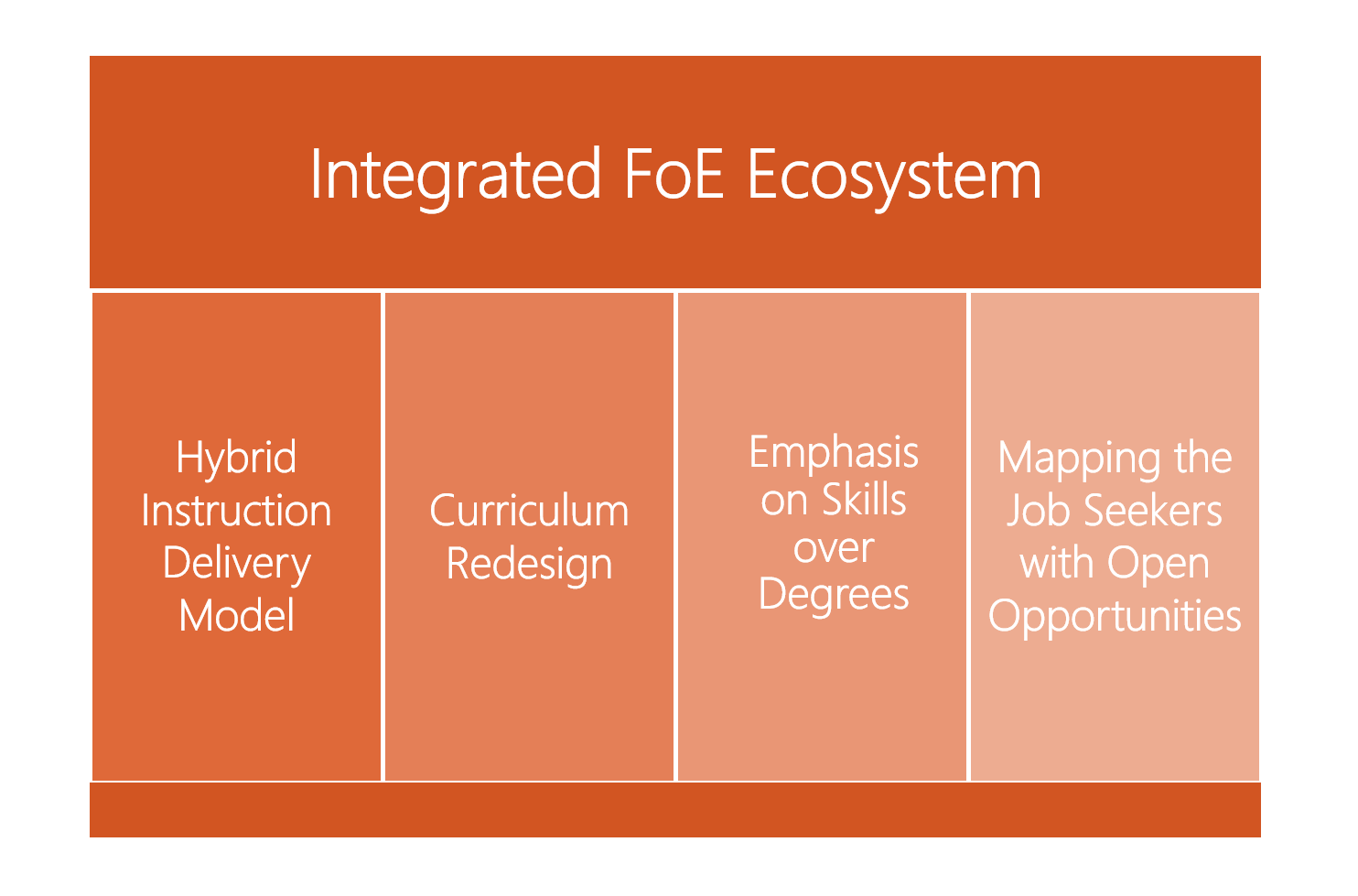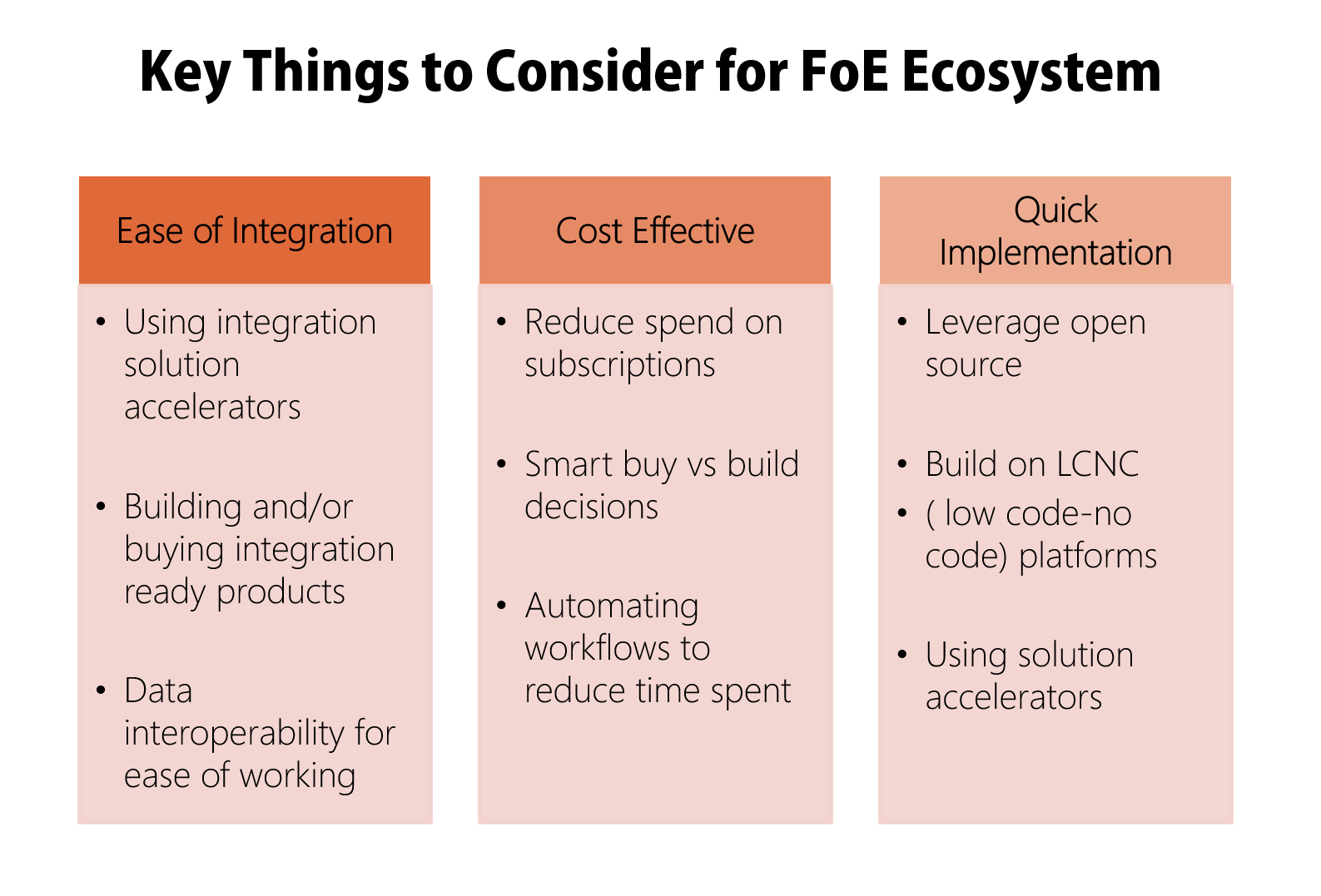
The world of education is rapidly changing. Are you prepared for the future of education? With the aggressive pace of technological transformation in education, the life of traditional academic degrees is rapidly decreasing, as companies now prefer skills over degrees. The days of having a “job for life” are gone, and universities need to think about the “future of education” seriously and prepare a roadmap to lead their students to employment.
According to the World Economic Forum, 50% of all employees will need reskilling by 2025 due to the adoption of new technology. Five years from now, over two-thirds of skills considered important in today’s job requirements will change.
The education sector must adapt to this shift and understand that the essential, in-demand skills of the future will be very different from what are currently being used or trained for. This blog post will give valuable insights into the future of education and help you connect the dots between education and employment. Let’s begin.
Future of Education: An Overview
The future of education stands at the intersection of technological innovation and evolving pedagogical approaches. It is moving toward a digitized learning environment that enables students to engage in diverse learning modalities, accessible education patterns, and equitable and inclusive knowledge.
This digital era demands a reimagining of how knowledge is imparted and acquired. It focuses on helping students develop the mindsets and competencies needed to succeed in their future careers. It gives way to technology-driven education systems that streamline teaching and instruction, cater to diverse learning styles, and foster critical thinking, creativity, and adaptability.
Integrating AI technologies like generative AI, machine learning, and natural language processing in education is bound to personalize the learning experience and promote a more tailored educational journey. Education policymakers and technology decision-makers need to embrace these modern technologies with added emphasis on the most critical EdTech trends 2024.
Harbinger conducted a Power Hour on the Future of Education (FoE): Connecting the Dots between Education and Employment. Rahul Singh, Senior Director – EdTech, Harbinger Group hosted the crucial discussion.
The panelists for this interactive virtual roundtable were Brain Amkraut, Vice President and General Manager – Workforce Development, Mercy College; Charity Jennings, Associate Dean of Academy, Wiley Edge; Javier Chan, CEO, Processim Labs, and Lisa Braverman, Assistant Vice President, Mercy College.
The panelists shared their expert insights on:
- Integrated future of education ecosystem and its four key pillars
- Role of various components in each of the four pillars
- Top drivers for the future of education
- Things to consider for implementing the future of education ecosystem
- And more
This crucial discussion was hosted by Rahul Singh, Senior Director – EdTech, Harbinger Group.
What is driving the future of education?
There are majorly four drivers of the future of education:
- Increasing enrollments
- Enhancing learning outcomes
- Reducing costs
- Building a roadmap for education to employment

While all these drivers are important, we asked our experts to talk about the most relevant ones. So, let’s see what our experts discussed.
What are the most relevant drivers of the future of education?
Charity: Well, I find each driver equally crucial for the future of education. But still, I feel increasing enrollments and cutting down costs are always essential. Currently, we at Wiley Edge are focusing on enhancing learning outcomes for that roadmap to employment.
Students must have a clear pathway to choose the career of their choice and grow professionally post university. And enhanced learning outcomes can really help with that. We need to focus on specific job roles to help a recent graduate get their career started. We also need to focus on professional development to enable them to grow into a full career and professional pathway.
Online learning is the future of education and makes students job-ready according to continuously changing marketing dynamics.
Brian: Well, I will go with the roadmap for education to employment. We’re seeing record numbers of students in the U.S. choosing not to pursue higher education, and there are all sorts of reasons, such as challenges related to cost and access. But one of the most significant difficulties I feel is that we are not giving an effective roadmap to people who are unaware of what the “bumps on the roads” could look like.
Also, there’s a very elite segment of the U.S. or global education market that’s well-prepared and well-aware of the pathway that will lead them to a good-paying job. But increasingly, we’re see discontent and disillusionment with the system as a whole.
We need to connect with students before they begin their higher education journey. We could get employers involved before students graduate or enter college to create that roadmap from education to employment.
This will force us to enhance our learning outcomes and help increase our enrollments. And if we do this right, we’ll undoubtedly cut down costs for ourselves and our students. So, I think this ecosystem is really critical.
Integrated future of education ecosystem
The future of education is to create an integrated ecosystem of frameworks which lay out a clear pathway for employment. Primarily, our integrated ecosystem of frameworks needs to be built around these four pillars:

1. Hybrid instruction delivery model: It would involve redesigning the existing classroom spaces and implementing technology for enablement.
2. Curriculum redesign: The curriculum needs to be driven by the skills required for the future and the market needs. It should also be flexible enough to accommodate hyper-personalized learning.
3. Emphasis on skills over degree: The need is to implement a digital microcredentialing system that allows job seekers and employers to thrive in a skills-based economy. And this, in turn, will promote a culture of lifelong learning.
4. Mapping job seekers with open opportunities: This requires a more collaborative exchange of information and data-driven decision-making between employers and educational institutions.
How the future of education ecosystem shapes up the higher education system
Brian: I would like to focus on curriculum redesign connect to skills that are in demand right now. There seems to be an opportunity for us, whether we’re on the administrative side or the teaching side, to find ways to integrate in real-time the skills that are in demand and those that are changing.
And then, we could use instruction delivery models to infuse the current curriculum and make those changes on the fly rather than the years it often takes in higher education.
We need to take into account the gap between what goes into a degree and what employers are looking for. That’s often a function of a bureaucratic-driven process of change inside higher education, both internally and externally.
It’s not simply that colleges are difficult to move on their own, but they’re responsive to oversight models of the state, sometimes the federal regulatory levels, that make these things difficult. So, cutting through that “red tape” would be increasingly valuable.

Current state of the integrated future of education ecosystem
Lisa: We are living through a digital age, and if we ignore the fact that people are learning visually and digitally, we’re going to lose the pedagogy and lose the student ultimately. This is because we’re not paying attention to contemporary changes in our society.
However, some leaders in higher education are really catching on and implementing those changes. Having said that, those changes will come back to us and inform changes within the rest of the higher education institution, which is so important. And that’s why we need grassroots-level transformative leadership throughout the higher education sector and who can take ownership.
Feeding labor market data back into the education system
Charity: We sort of work right to left within the integrated future of education system. We start with the conversations with our clients and what job openings, roles, and opportunities they have. We also collect information about what the line managers need for technical work and business operations.
We look at these things first and then feed them to the skills training, curriculum, and delivery we need to enable future-ready learning and have our emerging talent ready for those opportunities.
We also have a much broader business and university partnerships to provide online program management. Furthermore, we have the research and publishing arm of Wiley. This helps us bring our clients’ open opportunities to some of our university partners and share with them our highly skills-based curriculum targeted to those open opportunities.
Our broader strategy is to connect our university partners and publishing offerings back to the open opportunities that our clients have for emerging talent.
How flexible is it to get data from the labor market and implement curriculum redesign?
Javier: I would like to start by agreeing that the focus is on skills. However, it’s not just the skills that matter; it’s also important how we teach those skills. Younger generations have shorter attention spans, look for instant gratification, and consume shorter videos.
Yes, skills are essential, and they should be aligned with the needs of the corporate or job market. But we want students to pay attention and learn the skills we are trying to teach them. And this is where the role of software technology comes in.
We’re firm believers of active learning. We don’t want students to just passively look at the board or attend a Zoom call. But we want them to put into practice what they’re learning, make mistakes, and learn from those mistakes. This is an entirely different approach and a different set of results.
Now, coming to the data part, that’s one of the beauties of software-based solutions. Using these solutions, we can keep records of whatever we want, of course while keeping privacy concerns in mind. Also, when it comes to performance, even if it is anonymized data, we see how fast students are making decisions.
One of the things I like about simulations is that they are like a window to the personality of students. We can see how aggressively students make decisions. This information is also useful for employers. Some corporations have even started to use simulations as recruitment tools.
All this data can give employers a more complete profile of students. With all the data available to us from simulations, we can have the history of decisions students have made throughout their career. So, there’s a lot of potential in the usage of data to determine learning results and other aspects like the personality and soft skills of students.
Wrapping Up
Learning, teaching, and curriculum design are modernizing for good and will continue to evolve in response to the future of education and the job or skill requirements of tomorrow. The role of higher education, including educators and administrators, must adapt and grow as well.
Higher education must be prepared to enable students to learn for the future, become job-ready and innovative, and seize any opportunity that comes their way. One way to ensure this is to embrace digital transformation.
It is critical for higher education to adopt modern EdTech and latest models, considering the skills required for the future workplace and the shift towards a more personalized learner experience.
Our goal is to empower educators and learners by providing them future-driven EdTech and enabling them to make informed decisions about the future of education. If you are looking for a partner to prepare for the future of education or implement EdTech for your university, contact a Harbinger EdTech expert at contact@harbingergroup.com.





